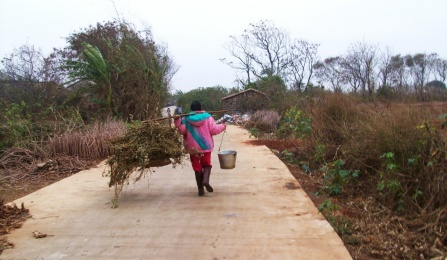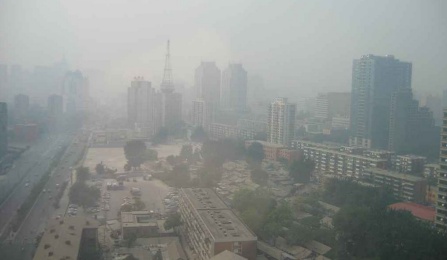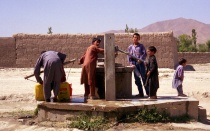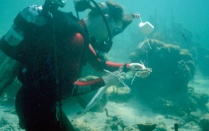Environmental Health

Photo by James Olson
Burden of Lung Cancer on Chinese Women: Taiyuan City Case Control Study
Location: China
Department: Epidemiology and Environmental Health
The incidence of lung cancer among Chinese females is among the highest in the world, with about 80,000 new cases reported and approximately 64,000 deaths each year. The female Chinese population has a low smoking rate of two to four percent, but lung cancer etiology continues to be a problem in female non-smokers.
Mu’s research seeks to link epidemiological information regarding smoking history, demographic data, family medical history, household information and diet with biomarkers of disease. She is also investigating the relationship between indoor and outdoor air pollution and lung cancer in this study.
Air Pollution During the Beijing Olympics

Photo by Lina Mu
Location: China
Department: Epidemiology and Environmental Health
Lina Mu, UB assistant professor of Epidemiology and Environmental Health and a native of China, has received a three-year, $1.3 million grant from the National Institute of Environmental Health Sciences to study the short-term effects of particulate matter (PM) among Beijing residents.
China has high levels of air pollution, including fine particles in the air, known as particulate matter, which is known to increase the risk of illness and death from cardiopulmonary diseases and cancers.
Organotin Stabilizers in Polyvinyl Chloride (PVC) Plastic Products and their Toxic Effects
Xuefeng Ren, MD, PhD
In collaboration with Xiaojiang Tang, Guangdong Medical Laboratory Animal Center and Guangdong Prevention and Treatment Center for Occupational Diseases, Guangzhou, Guangdong, China
Location: China
Department: Epidemiology and Environmental Health
Polyvinyl chloride (PVC) plastic products are commonplace in every industry and in everyday life. Many chemical additives, including Organotins (OTs), are not completely bound to the plastic and can be leached from the PVC water supply pipe or product into drinking water or the air. From there, the chemicals can enter various ecosystems. The elevated OTs’ exposure in drinking water and indoor air constitutes a health concern because many OTs are potential human nervous system, developmental or reproductive toxicants.
Ren and Tang’s proposed research to conduct molecular epidemiological studies will further explore the impact of OTs’ exposure on human health, particularly changes in human behaviors and damage to kidneys and the liver. The team expects the refined information to lead to improved risk assessments of OTs and PVC use, and, ultimately, to have a positive impact on PVC regulation and to improve public health.
Pesticides
An expert on dioxin toxicology, James Olson served on a national panel that studied the health effects of Vietnam veterans who were exposed to herbicides, including Agent Orange, and advised officials on policy decisions regarding compensation for veterans.

Advising on Health Effects of Agent Orange
Location: United States (Vietnam Veterans)
Department: Pharmacology and Toxicology/Epidemiology and Environmental Health
A UB expert on dioxin toxicology completed his service on the National Academies Institute of Medicine panel on Veterans and Agent Orange. The panel—the Committee to Review the Health Effects in Vietnam Veterans of Exposure to Herbicides—releases reports biennially to the Department of Veterans Affairs to help advise officials on policy decisions regarding compensation to veterans for service-related illnesses.



